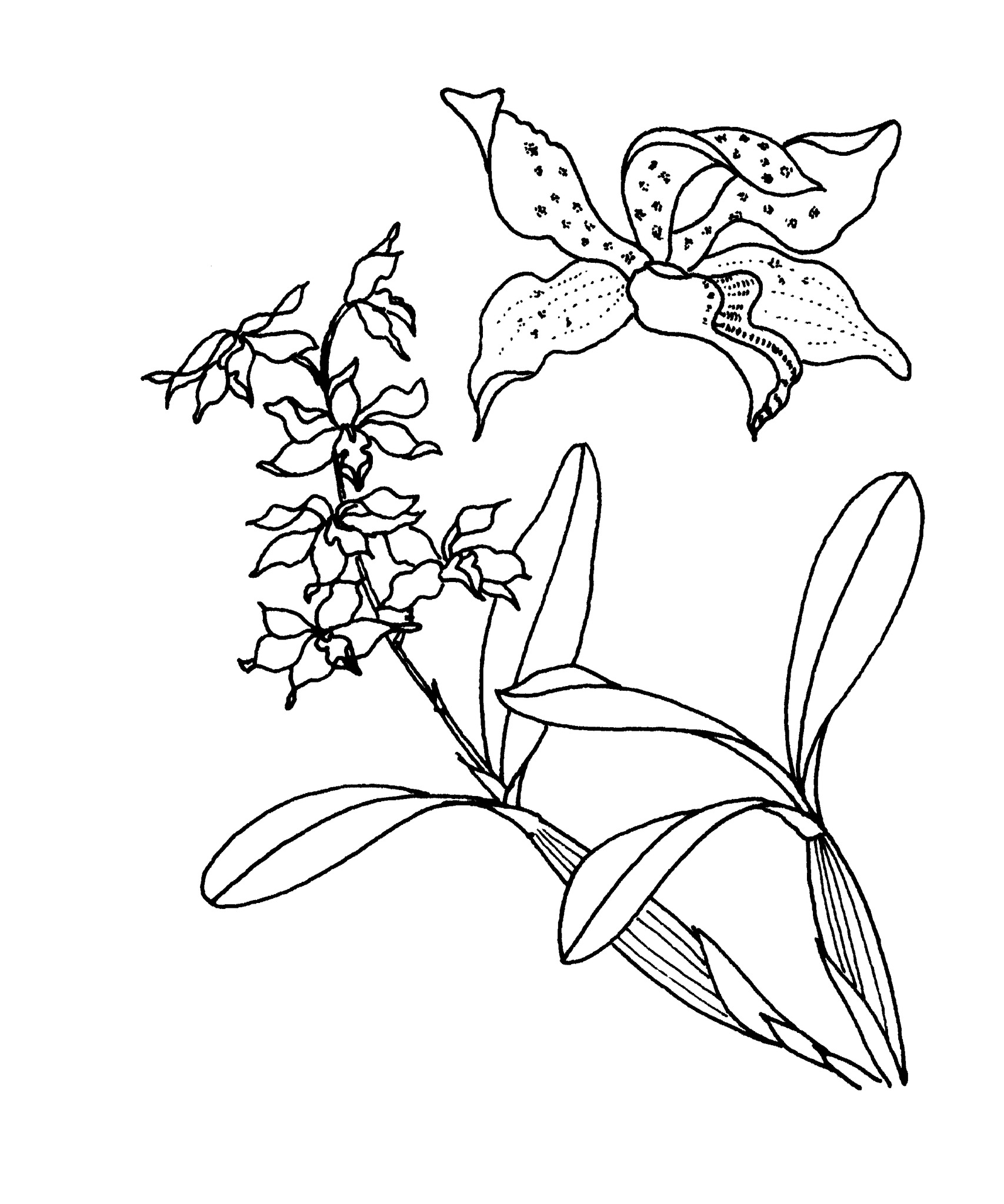
Medium sized epiphyte. Pseudobulbs spindle-shaped, to 30 cm long, furrowed. Leaves 2?4, oblong, to 13 cm long, to 6 cm wide, notched at tip. Flowers 8-20, to 8 cm wide, white to pale yellow with purple spots. Sepals ovate. Petals obovate, slightly wider than sepals. Labellum 3-lobed, side lobes erect, midlobe broadovate, callus of 3 ridges, labellum green with purple stripes; summer to spring.
Occasionally cultivated are:
D. forbesii Ridl., which is a medium sized epiphyte with white or cream flowers and purplish streaks on the labellum side lobes.
D. johnsoniae F. Muell., which is similar to D. forbesii but the petals are narrower and the flowers glabrous.
D. macrophyllum A. Rich., which is a robust epiphyte with white, green or yellowish flowers that have hairy sepals and a purple-striped labellum.
D. polysema Schltr., which is similar to D. macrophyllum but has 2 leaves on each pseudobulb rather than 3 and brown spots on the sepals.
D. rhodostictum F. Muell. &Kraenzl., which is a medium sized epiphyte or terrestrial with clubshaped pseudobulbs and white flowers with purple spots on the labellum.
D. spectabile (Blume) Miq., which is a robust epiphyte with large yellow or greenish flowers that are heavily spotted and striped with maroon or purple and have twisted perianth segments.
New Guinea.
Source: (2005). Orchidaceae. In: . Horticultural Flora of South-eastern Australia. Volume 5. Flowering plants. Monocotyledons. The identification of garden and cultivated plants. University of New South Wales Press.
